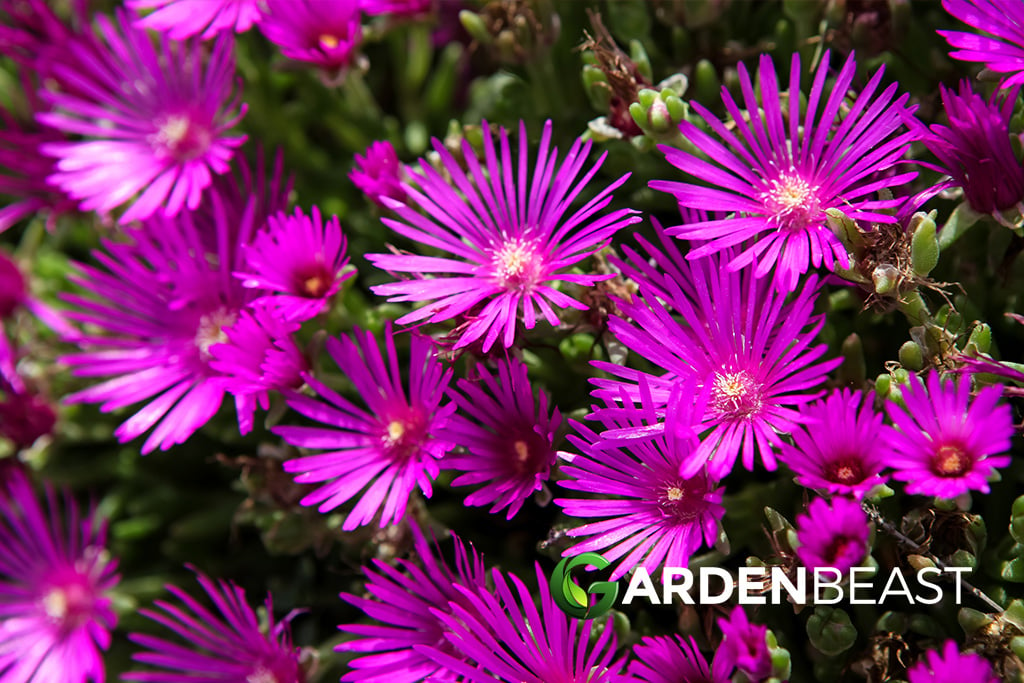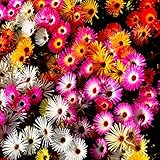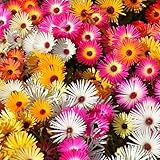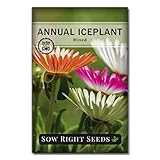If you live somewhere hot and would just want to have something that looks cool, then the Ice Plant is definitely a good choice.
Contrary to what the name suggests, the Ice Plant, Delosperma Cooperi, is actually a warm weather perennial that is tolerant to drought as it is a succulent, but less so in the cold. Its name is derived from the tiny hairs that reflect light in a way that it resembles ice crystals or appears as though its petals are frozen.
Originally discovered in Africa, the small Ice Plant comes in wide varieties and can serve as exemplary adorning inside homes and mini-garden set ups. This hardy herbaceous perennial was introduced to the US by Panayoti Kelaidis, who worked for the Denver Botanic Garden, in the early 1990s. Touching American soil before the turn of a century, the Ice Plant has since garnered the respect and favor of homeowners and gardeners alike.
About the ice plant
- The name “Ice Plant” is used to denote an umbrella term that pertains to several other species that use it as a common name.
- The species lavishes in urban gardens and can grow and spread rapidly under the right conditions. In fact, it spreads so rapidly in some areas that it has been deemed an invasive species.
- This plant has several cultivars, over 10 in fact, all of which are unique and beautiful in their own way, though the most prominent one is that of the Cooperi, with its signature purplish-pink flowers.
- The Ice Plant naturally grows year round, depending on temperature and climate, it can either grow perennially or even evergreen in some areas.
- Light is essential to the Ice Plant for it to grow healthy and strong. Growing the plant indoors might prove to be a challenge as they relish under direct sunlight for optimal growth.
- Aphids and Mealybugs are the most common pests associated with Ice Plants. They feed on the plant, causing damage to it. Light infestations can be treated by simply spraying over the affected areas with water. For heavily infested specimens, consider replacing instead of chemical treatment.
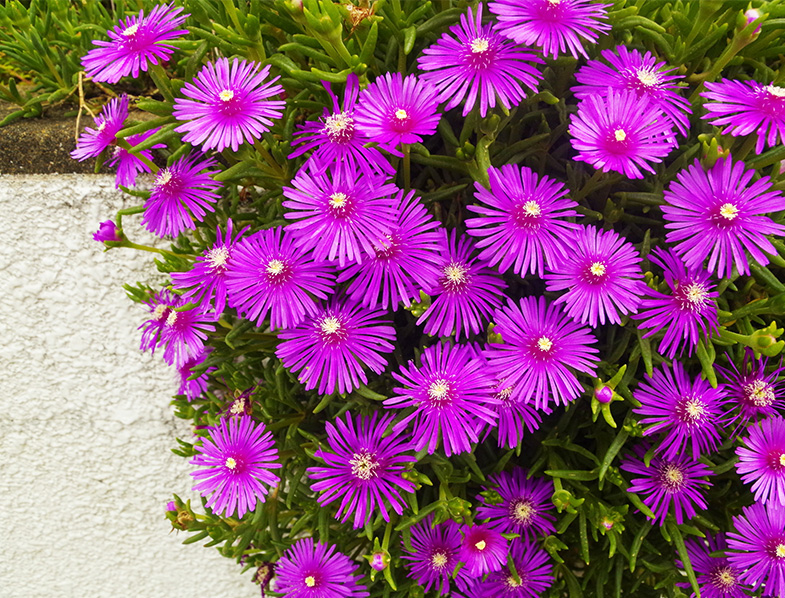
Ice Plant Features: An Overview
- Ice Plants are tenacious and can be found almost all across the United States. They are dominant in the state of Colorado, more so in Denver, and grow in anywhere between USDA zones 4 to 10.
- Despite their name, Ice Plants are actually rather sensitive to the cold and prefer more temperate environments with low levels of humidity; high levels of humidity can cause the plants to rot.
- The flowers of the Ice Plant look like those of the Daisy’s. Grown outside, the Ice Plant covers the ground, while growing them inside makes for excellent potted plants and serve as defined accents to rock gardens.
- When matured, Ice Plants can reach 3 to 6 inches in height and up to 24 inches across.
- Most cultivars of the Ice Plant grow really well during high temperatures from Summer to Spring. During this period, their growth and ability to self-propagate is at its highest.
Growing an ice plant
It can be mind-boggling to just even get started with growing one of these. What makes it difficult is the sheer range of varieties you can choose from; that and the fact that the Ice Plant grows differently depending on the temperature and humidity. As a good start, we suggest 1st picking which type or types of Ice Plant you want to grow and to cycle through their growth process depending on which climate would suit them best.
Choosing to grow 2 or more cultivars at the same time is for more advanced gardeners, we’ll be going over how to grow Ice Plants for beginners. To start, ensure that your soil composition easily drains water.
Excessive moisture and waterlogging is an issue for this plant and can cause it to suffer and die. Sandy and gravelly soil is ideal in this case.
Remember that these plants thrive in sunlight, so while it’s okay to plant them in the open, remember to provide adequate shelter to at least offer some protection from other natural elements. In arid climates (E.G. Southwest USA), plant in autumn.
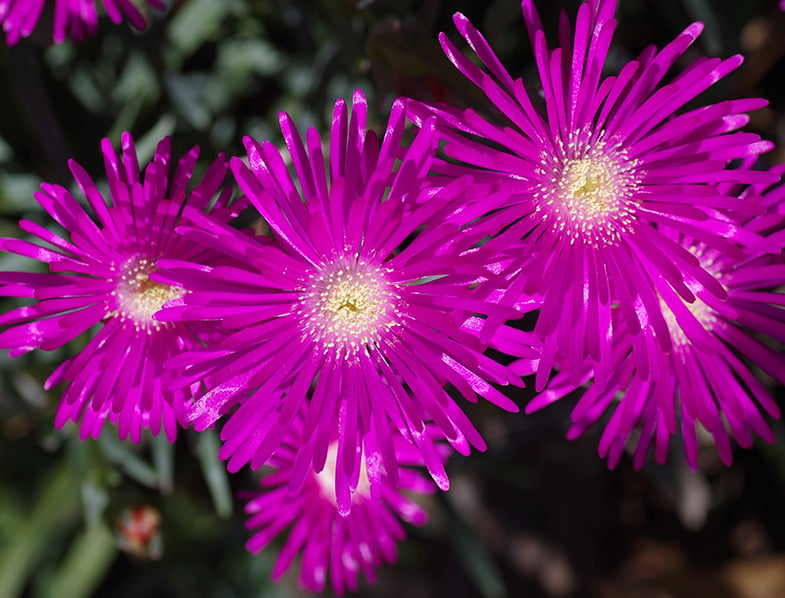
In cooler ones, plant mid-summer; these are the best times to have them grow with respect to atmospheric conditions as it will allow them to establish roots and maximize growth. Water deep and water at most weekly, while the temperature is still high.
As winter draws nearer, cut down on your watering if at all so as not to have them store moisture in their leaves and suffer from freezing. Unless you decided to care for them inside, cover your Ice Plants with a frost blanket and mulch around them with gravel to help them equalize their moisture levels. Once spring hits, prune out any stems that died in winter.
So long as it’s not yet winter or the cold months, you don’t need to worry about adding fertilizer as these plants grow just fine on their own during the warm seasons. If you must add fertilizer, then compost or slow-release fertilizers will do.
Watering an ice plant
High moisture levels can harm the plant, that is why as a general rule, during warmer seasons, water the plant aptly on a biweekly basis.
Once the colder seasons start coming in, water less or not at all as they will naturally store moisture in their leaves and enter a sort of hibernation state. For Ice Plants grown outside, the occasional rain showers will suffice and you don’t need to supplement watering unless there is a drought.
Propagating an ice plant
As mentioned earlier, Ice Plants propagate easily, especially when subjected to large amounts of sunlight. If you would want more controlled propagation or look to propagate them symmetrically for interior design purposes, then you can do so easily via seedling, cuttings, or by division.
Seedlings
Relatively simple; take your Ice Plant seed and bed it nicely in rich composite soil that drains nicely. No need to cover it, but do press it against the soil so it does not get blown away. Once set, water lightly and give it lots of light so it begins germinating.
- Ice plant seeds mix is a hardy perennial grown in USDA Zones 10 - 11 as a flowering ground cover plant. This mix will grow as an annual in frosty area.
- Dorotheanthus bellidiformis, commonly called Livingstone Daisy or Ice Plants, is free-flowering, and once it is established, it is drought tolerant. The bright colored daisies are 1 inches across and have many long petals around a center black eye.
- It is a perennial only in frost-free zones, but they grow quickly and bloom quickly and can be an annual in all other zones.
- They love a position in full sun, and they work well edging a border or edging a walkway or driveway.
- Sow 3 - 5 seeds per cell or approximately 5000 seeds covers 100 square feet for a ground cover with a mass of beautiful flowers.
- Organic Daisy Ice Plant Seeds: Premium 2000 Daisy Ice Plant Seeds offer a vibrant Livingstone Mix in pink, purple, white, and yellow. Organic spring mix seeds for planting flowers in their gardens.
- Drought-Tolerant Groundcover: Daisy Ice Plant seeds thrive in sandy soil & full sun. Fall flower seeds are drought-tolerant and create a beautiful perennial ground cover for outdoor landscapes.
- Versatile Planting Options: These seeds are suitable for both indoor plant seeds and live plants outdoor. Semillas de flores para sembrar. Seed packets ensure easy and convenient planting.
- Perennial Wildflower Seeds: KVITER's Daisy Ice Plant Seeds are perfect for creating a perennial wildflower garden. Floral arrangers and homesteaders will appreciate fall seeds long-lasting blooms.
- Seasonal Appeal: These fall flower seeds for planting are ideal for seasonal gardening. Available in bulk, these perennial plants are perfect for large-scale projects. Use them as fall seeds annually.
- Beautiful - Full color seed packets of Ice Plant flowers (Dorotheanthus bellidiformis). This interesting annual variety has daisy-like flowers on succulent foliage. Leaves produce crystals that look like ice. Flowers bloom in glowing hues of orange, pink, purple, red, white and yellow. Seed packet contains 400 MG (about 1600 seeds).
- Productive - Ice Plant germinates in 14-21 days when soil temps are 68°F. Plant 1/16” deep and space 10-12” apart in an area with full sun. This variety will grow 3-6” tall with a spread of 12-24”. Flowers will mature in 112-119 days, plant in USDA zones 5-9.
- Pollinator Friendly - Butterflies and bees love Ice Plant flowers and will likely pay you many visits. Great way to support your local pollinators. Plant in containers or in carefully arranged beds. Enjoy outdoors in the garden or grow indoors with supplemental light.
- Easy to grow - Instructions included on each packet. Plus, we are available to answer all your questions. If these seeds don’t germinate, we will happily make it right for you.
- Safe and Sustainable - Our operation is fully solar powered, and Sow Right Seeds has taken the Safe Seed Pledge to sell only fresh Non-GMO heirloom seeds for you and your family.
Last update on 2024-09-20 / Affiliate links / Images from Amazon Product Advertising API
Cuttings
Ice Plant cuttings work pretty much the same as with other cuttings. Once you have your selected cutting, allow it to slightly heal and simply have it planted. You can do this any time throughout the year, but we do recommend doing so in a pot, enjoying the winter time with you inside the house until it blows over.
Division
You make use of the division method of propagation if you intend to plant Ice Plants in pots. This way you can easily division them, especially when repotting. To begin, simply take out the original plant from its pot and slowly split the roots until they form 2 separate plants. Place both in new pots with its favored soil and propagate in Spring.
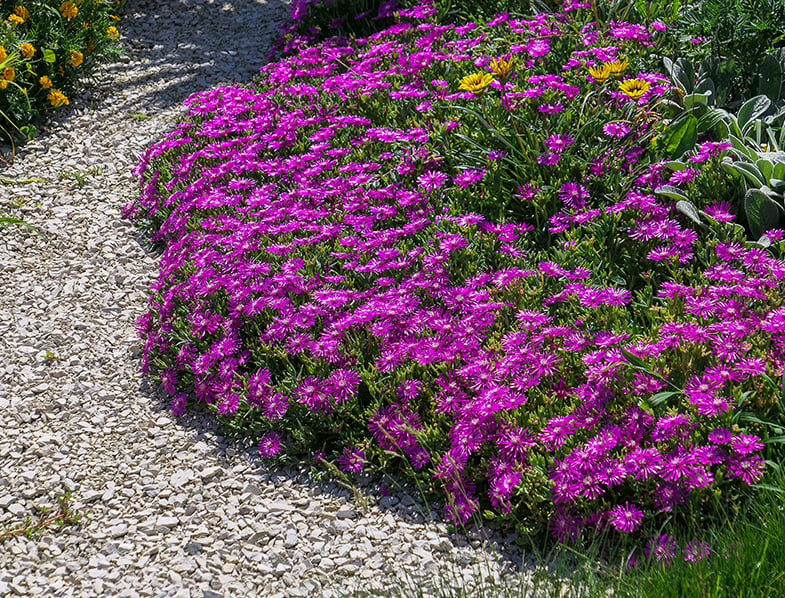
In Conclusion
With the ability to grow virtually anywhere and at any time of the year, provided it gets adequate water and sunlight, the Ice Plant is easy to acquire, care for, and propagate.
One need not be an expert gardener to take care of these unique plants, but you do need to be mindful. While you can practically grow them where and when you like, knowing where and when to best do so will let you reap the greatest of rewards – fast growing, healthy, and fully-blossoming flowers that can cover the entire expanse of either your front or backyard or even an interior patio garden.
There are lots of variations to choose from, and though we didn’t discuss those in detail in this guide, you can safely look up information online as well as take a look at some stunning images that showcase the beauty and uniqueness of each. Regardless of which variation, remember the general care guidelines for any Ice Plant, lots of sun and just the right amount of water.
